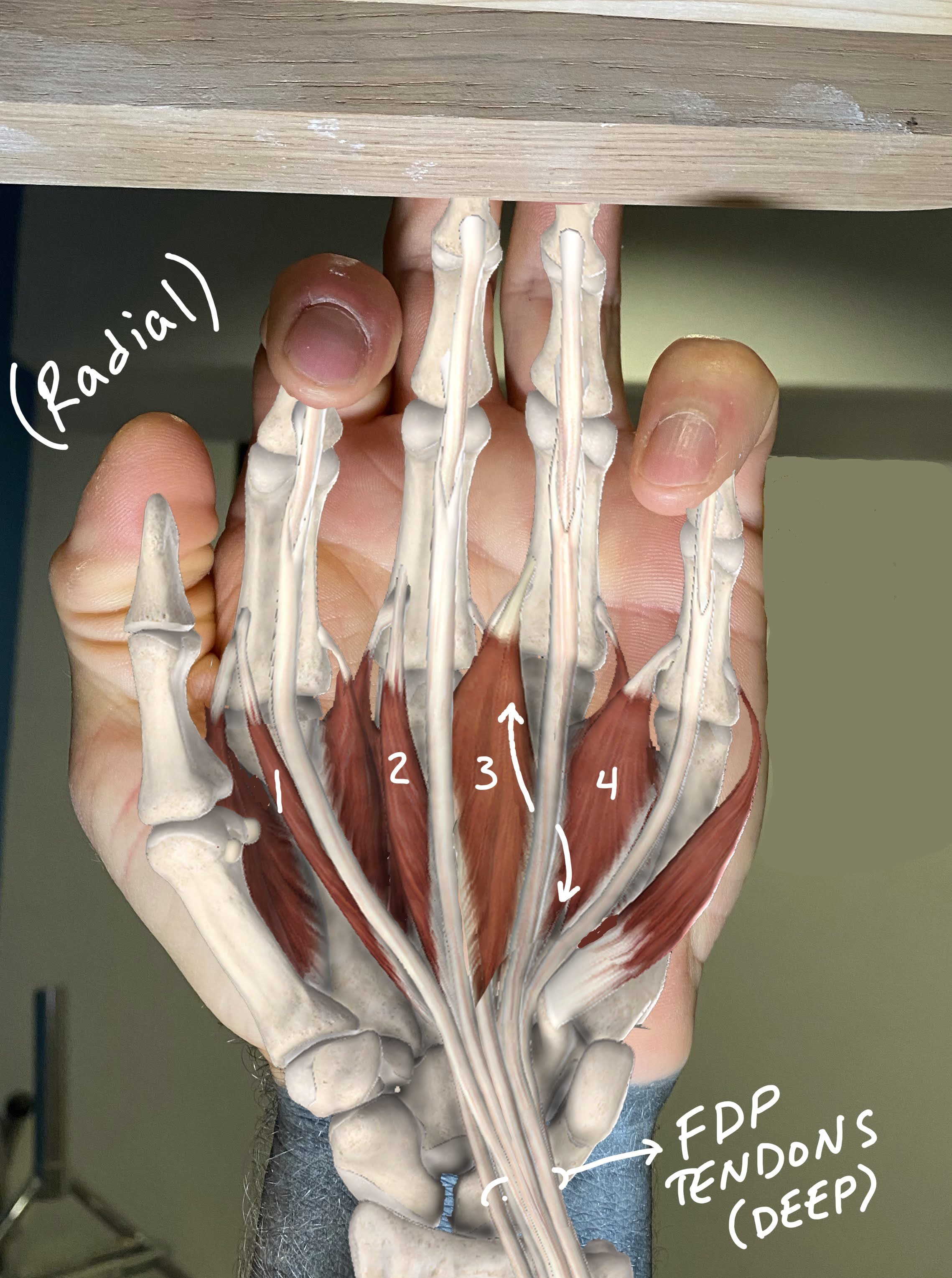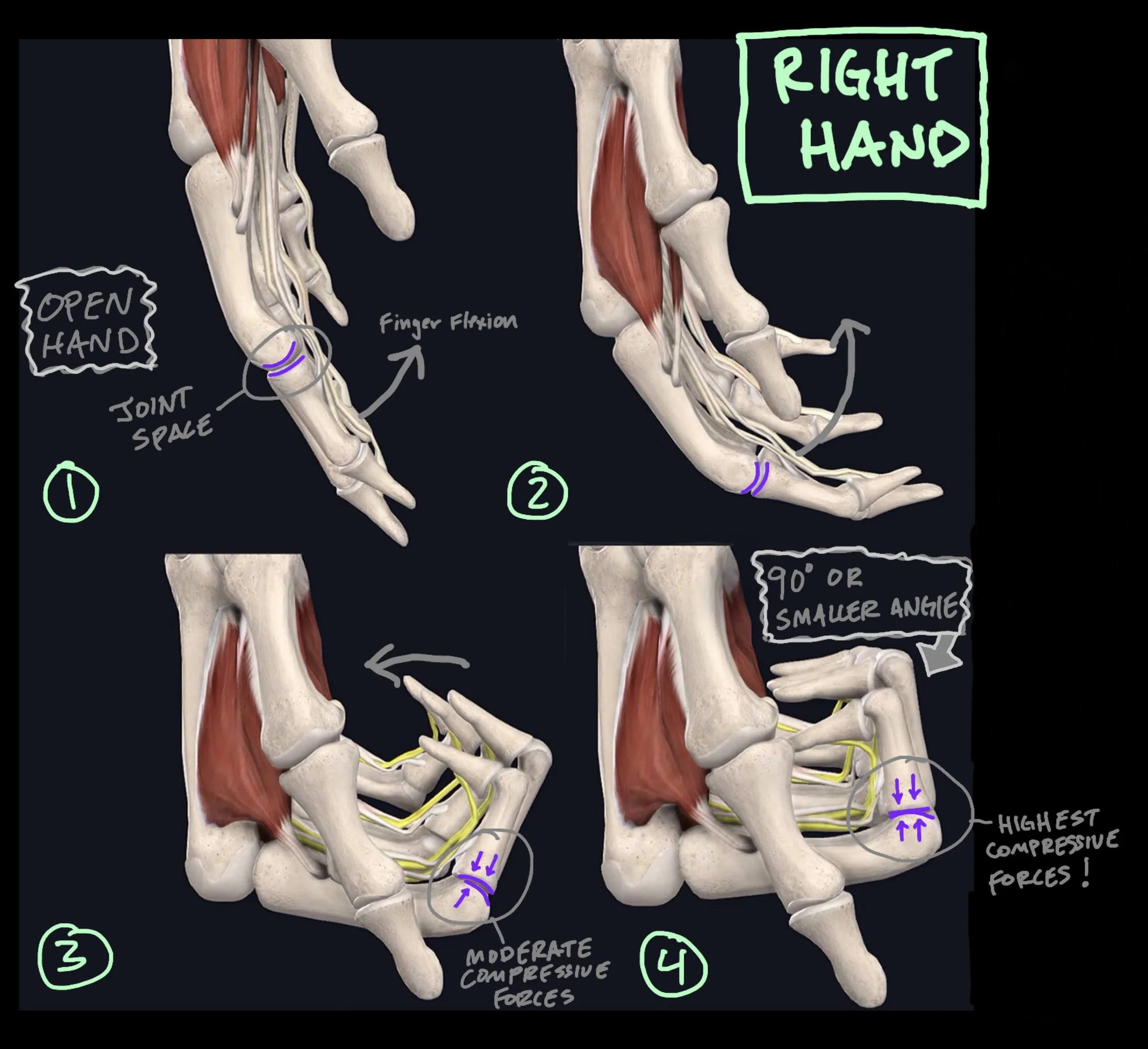Taping should be part of progressive rehab plan, not a method to prevent one.
Read MoreEasy climbing is one of the most common mistakes I see climbers make with PIP joint pain, especially when the pain is in the middle and ring finger.
Read MoreTape use has nuance, especially with injuries. Regarding pulley injuries, it reduces stress while re-introducing loads. But reducing stress to prevent an injury doesn’t make sense.
Read MoreOne of the important keys to successful rehab is consistency. Loads, directions, velocities, and tut need to be reproducible. If not, the feedback from loading isn’t accurate.
Read MoreLearn about palm bruising and take away some actionable tips.
Read MoreThe PIP joint accounts for 85% of the motion for grip strength— but it’s commonly injured in climbers.
Read MoreIf you climb on pockets regularly you’ve likely encountered a strained lumbrical.
Read MoreLack of symptoms doesn’t mean you’re healed, and pain doesn’t mean the worst. Symptoms don’t tell us everything— just take a look at these images.
Read MoreOur hands are not beautiful. Swollen joints, thickened skin, crooked digits etc. That’s the life of a climbers hand. Something people don’t consider is why it actually happens.
Read MoreHave you ever wondered why you can’t produce as much force through your fingers as others? You put in the work, do the right things, and still can’t reach that same intensity. Here’s why.
Read MoreWhat if pulley ruptures in climbers aren’t as horrible as they sound? Let’s take a look at the bigger picture.
Read MoreThe “common knowledge” of what to do about finger pain is often very misleading. Let’s clarify a few things.
Read MoreThe dreaded pulley injury is common in climbers. Let’s take a look under the surface.
Read More












